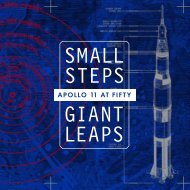Animals Are Us: Anthropomorphism in Children’s Literature; Celebrating the Peter J. Solomon Collection
Why do we tell stories to children through and about animals? Are there reasons why we shouldn’t? Animals Are Us invites explores these questions and more through influential historic examples of anthropomorphism in dialogue with contemporary books drawn from the collection of Peter J. Solomon (Harvard College Class of 1960, MBA 1963) and the holdings of Houghton Library. The exhibition invites you to engage critically with animal anthropomorphism, and delight in the artfulness of this enduring literary genre. Catalog of an exhibition on view at Houghton Library, Harvard University, September 1, 2021 - January 7, 2022.
Why do we tell stories to children through and about animals? Are there reasons why we shouldn’t? Animals Are Us invites explores these questions and more through influential historic examples of anthropomorphism in dialogue with contemporary books drawn from the collection of Peter J. Solomon (Harvard College Class of 1960, MBA 1963) and the holdings of Houghton Library. The exhibition invites you to engage critically with animal anthropomorphism, and delight in the artfulness of this enduring literary genre.
Catalog of an exhibition on view at Houghton Library, Harvard University, September 1, 2021 - January 7, 2022.
Create successful ePaper yourself
Turn your PDF publications into a flip-book with our unique Google optimized e-Paper software.
29a–B<br />
Jean de Brunhoff (French, 1899–1937, author-illustrator)<br />
Prelim<strong>in</strong>ary sketches and cover study for L’ABC de Babar,<br />
1934<br />
Graphite on paper, 12 x 9 cm; gouache on paper, 13 x 12 cm<br />
Houghton Library, MS Typ 1186 (1, 7)<br />
Bayard Liv<strong>in</strong>gston Kilgour and Kate Gray Kilgour fund and<br />
The Philip Hofer Charitable Trust, 2015<br />
This book for early readers was published with a cover show<strong>in</strong>g<br />
Babar writ<strong>in</strong>g <strong>the</strong> title on a blackboard with a piece of chalk <strong>in</strong><br />
his trunk. These prelim<strong>in</strong>ary sketches reveal de Brunhoff ’s early<br />
th<strong>in</strong>k<strong>in</strong>g about <strong>the</strong> project. Ultimately his illustrations became<br />
more complex, packed with visual references to each letter of<br />
<strong>the</strong> alphabet. <strong>Are</strong> <strong>the</strong> stories of dapper Babar an endorsement<br />
of French colonialism that perpetuates demean<strong>in</strong>g stereotypes,<br />
or are <strong>the</strong>y satires of imperial propaganda—and can a child<br />
tell <strong>the</strong> difference? The last<strong>in</strong>g impact of children’s literature,<br />
no matter how young <strong>the</strong> reader or however enterta<strong>in</strong><strong>in</strong>g <strong>the</strong><br />
subject, is not to be underestimated. Books expand a child’s<br />
vision of <strong>the</strong> world beyond <strong>the</strong>ir home. What is <strong>the</strong> world you<br />
want <strong>the</strong>m to see?<br />
65



